Earth is home to an astonishing variety of life forms, some of which seem to defy our understanding of what animals should look like. While we often imagine aliens as strange beings from other planets, some of the creatures sharing our world appear so bizarre that they might as well have descended from outer space. These evolutionary marvels have adapted to extreme environments and developed extraordinary features that challenge our perception of earthly life.
The Blobfish: Master of Deep-Sea Adaptation
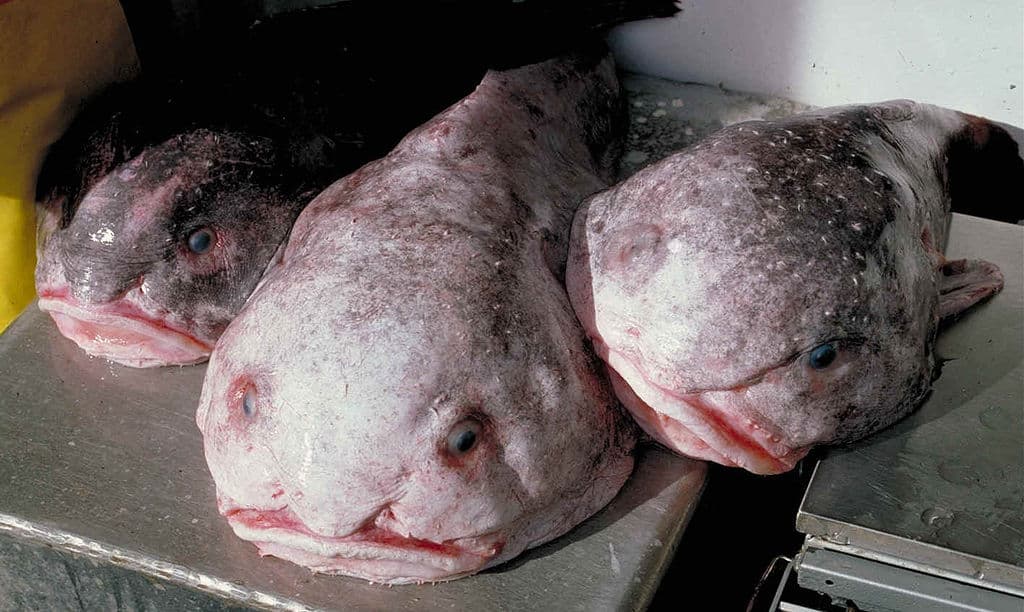
Perhaps no creature better embodies otherworldly strangeness than the blobfish (Psychrolutes marcidus). Voted the “World’s Ugliest Animal” in 2013, this deep-sea dweller appears utterly alien when brought to the surface. However, its bizarre appearance is a testament to remarkable evolutionary adaptation. Living at depths between 600 and 1,200 meters where pressure exceeds 100 times that at sea level, the blobfish’s body consists primarily of a gelatinous mass with a density slightly less than water, allowing it to float above the seafloor with minimal energy expenditure.
In its natural habitat, the blobfish actually looks much more like a conventional fish; it’s only when brought to the surface that decompression distorts its features into the droopy, melted appearance that has captured public imagination. The blobfish’s unique physiology represents an ingenious solution to surviving in one of Earth’s most extreme environments, demonstrating that what appears alien to us is merely nature’s perfect answer to an extraordinary challenge.
The Axolotl: Eternal Youth Incarnate
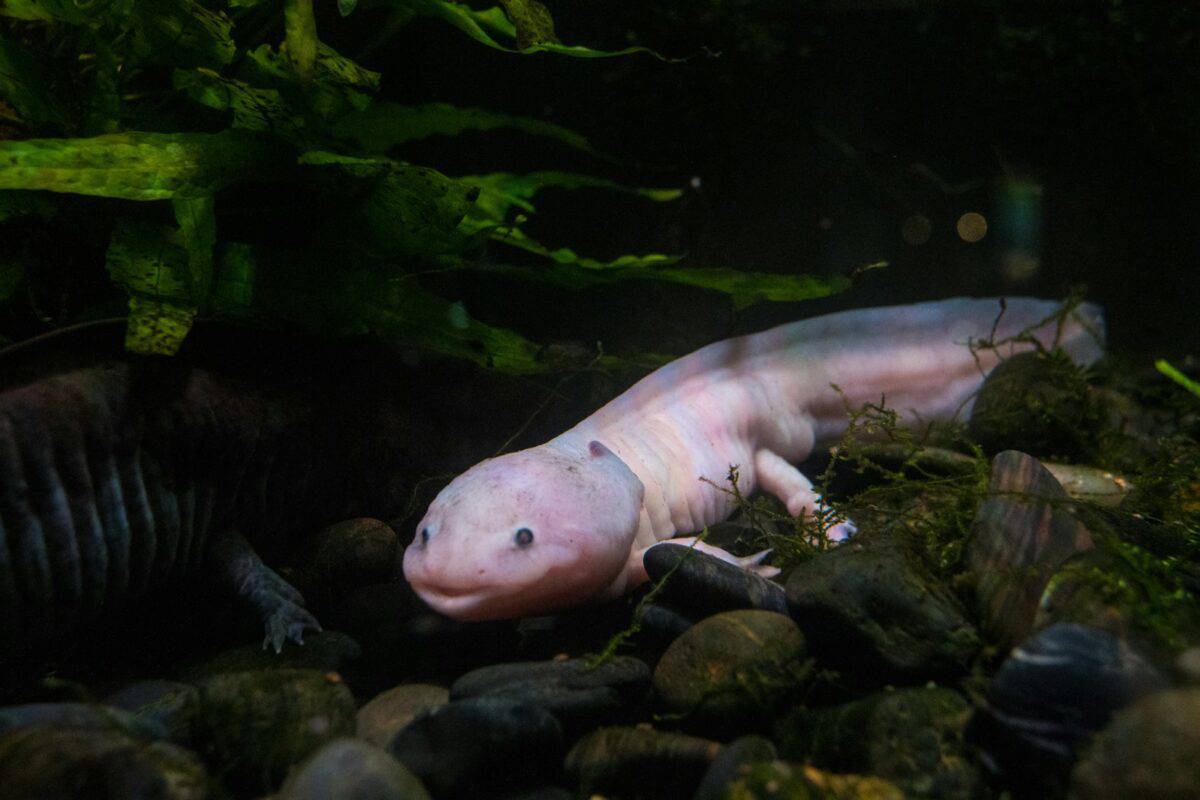
The axolotl (Ambystoma mexicanum) seems to have emerged from science fiction rather than evolutionary history. This critically endangered amphibian native to Mexico is best known for its extraordinary regenerative abilities and neotenic features. Unlike most amphibians, axolotls exhibit the biological phenomenon of neoteny, meaning they retain juvenile characteristics throughout adulthood, never undergoing metamorphosis. Their perpetually youthful appearance includes external gills that fan out from their heads like exotic headdresses, giving them an otherworldly appearance.
But what truly sets axolotls apart is their unparalleled regenerative capacity. They can regrow entire limbs, parts of their brain, heart, and other vital organs with no scarring. Scientists have documented cases where axolotls have regenerated the same limb up to five times. This remarkable ability has made them invaluable research subjects in regenerative medicine. Currently found only in captivity and in a few isolated locations in Mexico’s Lake Xochimilco, these “water monsters” (as their Aztec name translates) represent one of Earth’s most alien yet fascinating evolutionary experiments.
The Mantis Shrimp: Nature’s Living Rainbow with Deadly Precision

The mantis shrimp (order Stomatopoda) possesses features so extraordinary they seem impossible for an Earth-evolved creature. These marine crustaceans wield what may be the most complex visual system in the animal kingdom, featuring compound eyes mounted on stalks that can move independently of each other. While humans have three types of color-receptive cones, mantis shrimp have up to 16 different photoreceptor types, allowing them to perceive ultraviolet, infrared, and polarized light invisible to us.
Their vision operates so differently from ours that scientists believe they experience colors beyond human comprehension. Equally alien are their specialized limbs, which can strike prey with the speed of a .22 caliber bullet – so fast they create cavitation bubbles that produce both light (sonoluminescence) and heat approaching the temperature of the sun’s surface. These strikes reach accelerations of 10,400 g, among the fastest movements in the animal kingdom. Some species, known as “smashers,” can deliver blows powerful enough to break aquarium glass. With lifespans of 20+ years and complex social behaviors, mantis shrimp represent one of nature’s most alien yet fascinating evolutionary achievements.
The Tardigrade: Earth’s Ultimate Survivor

If any Earth creature deserves the title “alien,” it’s the microscopic tardigrade (phylum Tardigrada). These eight-legged microanimals, commonly known as water bears or moss piglets, possess survival capabilities that defy conventional biological limitations. Measuring less than a millimeter long, tardigrades can withstand conditions that would obliterate any other known life form. They can survive temperatures from near absolute zero (-458°F) to well above boiling (300°F), pressures six times greater than the ocean’s deepest points, radiation levels thousands of times higher than what would kill a human, and the complete vacuum of space.
Their most remarkable ability might be cryptobiosis—when facing extreme conditions, tardigrades can enter a dehydrated state called a “tun,” reducing their water content to less than 3% and suspending their metabolism almost completely. In this state, they can survive without water for up to 30 years, only to reanimate when conditions improve. Scientists have successfully revived tardigrades after 30 years in frozen ice and have even recovered viable eggs from museum specimens over 200 years old. These virtually indestructible creatures have survived all five mass extinction events and will likely outlast humanity itself, embodying alien resilience on our own planet.
The Goblin Shark: Living Fossil from the Abyss
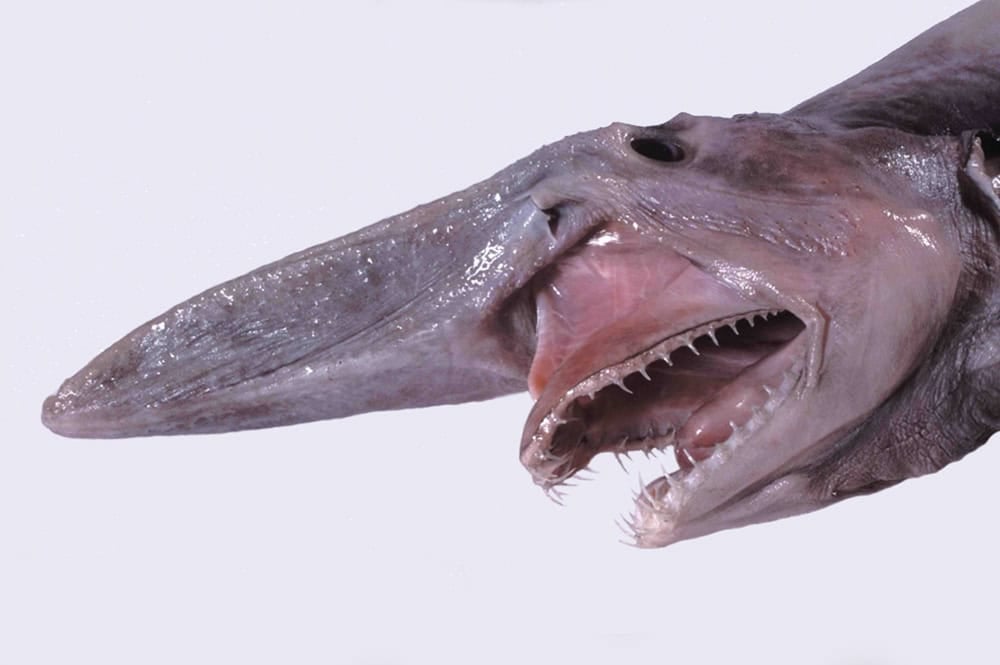
Lurking in the oceanic twilight zone at depths between 890 and 3,150 feet swims one of the most primordial-looking predators on Earth: the goblin shark (Mitsukurina owstoni). This rare deep-sea species is often called a “living fossil” due to its ancient lineage dating back 125 million years. Its most alien feature is undoubtedly its protrusible jaw mechanism, which can extend forward with lightning speed to capture prey. This specialized structure allows the shark’s jaws to shoot forward nearly the length of its snout, creating one of the most startling feeding apparatuses in the animal kingdom.
The goblin shark’s ghostly pink coloration, flabby body, and flattened, blade-like snout crowned with ampullae of Lorenzini (electroreceptive organs) complete its otherworldly appearance. Scientists have rarely observed these creatures alive, as they typically inhabit depths beyond human access. When captured and brought to the surface, they usually perish quickly, their bodies adapted to the crushing pressures of the deep. With a biology so specialized and an appearance so bizarre, the goblin shark represents an evolutionary path seemingly disconnected from familiar marine life, embodying the alien nature that exists in Earth’s least explored frontier.
The Aye-Aye: Madagascar’s Nocturnal Enigma

The aye-aye (Daubentonia madagascariensis) of Madagascar represents one of primates’ most unusual evolutionary experiments. This nocturnal lemur has developed such specialized features that early naturalists struggled to classify it, initially mistaking it for a large squirrel or rodent. The aye-aye’s most striking feature is its extraordinarily elongated middle finger, which can rotate in a ball-and-socket joint and comprises about 1/6 of the animal’s total body length. This specialized digit is used for “percussive foraging” – the aye-aye taps on trees with its skeletal finger, listening for hollow spaces that indicate the presence of insect larvae, then uses the same finger to extract the grubs.
Adding to its alien appearance are enormous bat-like ears that can rotate independently, continuously moving radar dishes that detect the slightest sounds of insects moving beneath bark. Its large, forward-facing eyes dominate a face framed by wild, unkempt fur, while continuously growing incisors (similar to rodents) complete its unsettling appearance. Sadly, the aye-aye’s unusual appearance has made it the target of superstition in Madagascar, where some local beliefs hold that aye-aye sightings are omens of death. This cultural perception, combined with habitat loss, has driven this remarkable creature to endangered status, threatening one of nature’s most unusual evolutionary specializations.
The Barreleye Fish: The Fish with a Transparent Head
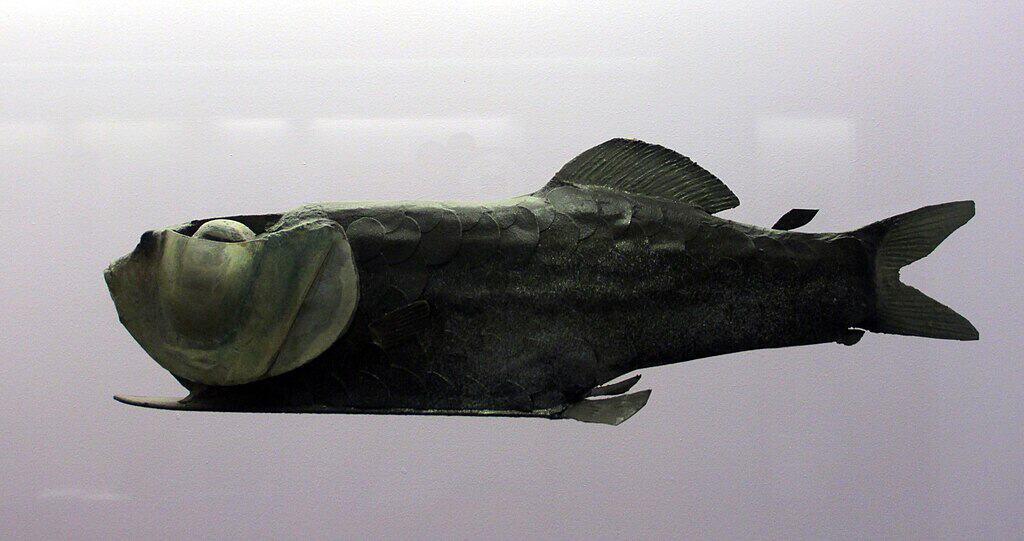
The barreleye fish (family Opisthoproctidae) represents one of the deep sea’s most extraordinary adaptations. This rare fish, dwelling at depths between 400 and 2,500 meters, possesses a completely transparent dome-shaped head that houses its tubular, ultra-sensitive eyes. These specialized green eyes point upward by default, allowing the fish to detect the silhouettes of potential prey against the faint light filtering down from the ocean surface. What makes this creature truly remarkable is that these eyes can also rotate forward within the transparent shield when the fish shifts to a vertical feeding position.
The barreleye’s clear cranium is filled with transparent fluid, providing perfect optical conditions for its unique visual system. First discovered in 1939, the living fish wasn’t photographed until 2004, and scientists didn’t confirm the rotational capability of its eyes until 2009. The fish’s body is small and dark, effectively camouflaging it in the deep waters, while its mouth is tiny and toothless, adapted for plucking tiny crustaceans from the stinging tentacles of siphonophores (relatives of jellyfish). The barreleye represents an extraordinary evolutionary solution to the challenges of hunting in the deep ocean’s perpetual twilight, embodying an alien design perfectly suited to its extreme environment.
The Platypus: Evolution’s Puzzling Mashup

When European naturalists first encountered specimens of the platypus (Ornithorhynchus anatinus) in the late 18th century, many dismissed it as an elaborate hoax – a creature seemingly assembled from parts of different animals. This skepticism was understandable, as the platypus defies conventional zoological categories. It’s one of only five extant species of monotremes, mammals that lay eggs rather than giving birth to live young. The platypus boasts a duck-like bill that contains no teeth but houses sensitive electroreceptors capable of detecting the electrical impulses generated by the muscle movements of prey. Adding to its peculiarities, male platypuses possess venomous spurs on their hind legs – making them one of the few venomous mammals in existence.
Their venom, potent enough to kill small animals and cause excruciating pain in humans, further separates them from conventional mammalian traits. Perhaps most bizarrely, when scientists first mapped the platypus genome in 2008, they discovered it contains elements of reptilian, bird, and mammalian DNA, creating a genetic mosaic that reflects its evolutionary uniqueness. Even the platypus’s method of nursing young is alien – lacking nipples, females secrete milk through specialized skin patches for their hatchlings to lap up. This remarkable creature, native to eastern Australia, represents one of evolution’s most fascinating experiments, a living testament to the diverse pathways of natural selection.
The Yeti Crab: Hairy Denizen of Hydrothermal Vents

Discovered only in 2005, the yeti crab (family Kiwaidae) represents one of science’s most recent encounters with Earth’s alien life forms. These crustaceans inhabit some of the planet’s most extreme environments – hydrothermal vents and cold seeps in the deep ocean where scalding water laden with toxic minerals erupts from the seafloor. The most distinctive feature of these crabs is their hairy, bristle-covered claws and legs, which give them their “yeti” nickname. However, these hairs serve a vital biological purpose rather than mere decoration.
The yeti crab practices a form of “farming” by waving its hair-covered limbs over hydrothermal vents, cultivating colonies of bacteria that feed on chemicals in the vent fluid. The crab then consumes these bacteria as its primary food source. This symbiotic relationship allows the yeti crab to thrive in environments utterly devoid of sunlight, where traditional food chains cannot exist. Different species have been discovered at various deep-sea locations, including Kiwa hirsuta near Easter Island and Kiwa puravida off Costa Rica. Their blind, pale appearance reflects their adaptation to an environment without light, while their unusual physiology allows them to withstand high pressure, extreme temperatures, and toxic chemicals that would kill most marine life. The yeti crab exemplifies how evolution can produce seemingly alien solutions to survive in Earth’s most challenging habitats.
The Tarsier: Wide-Eyed Nocturnal Hunter
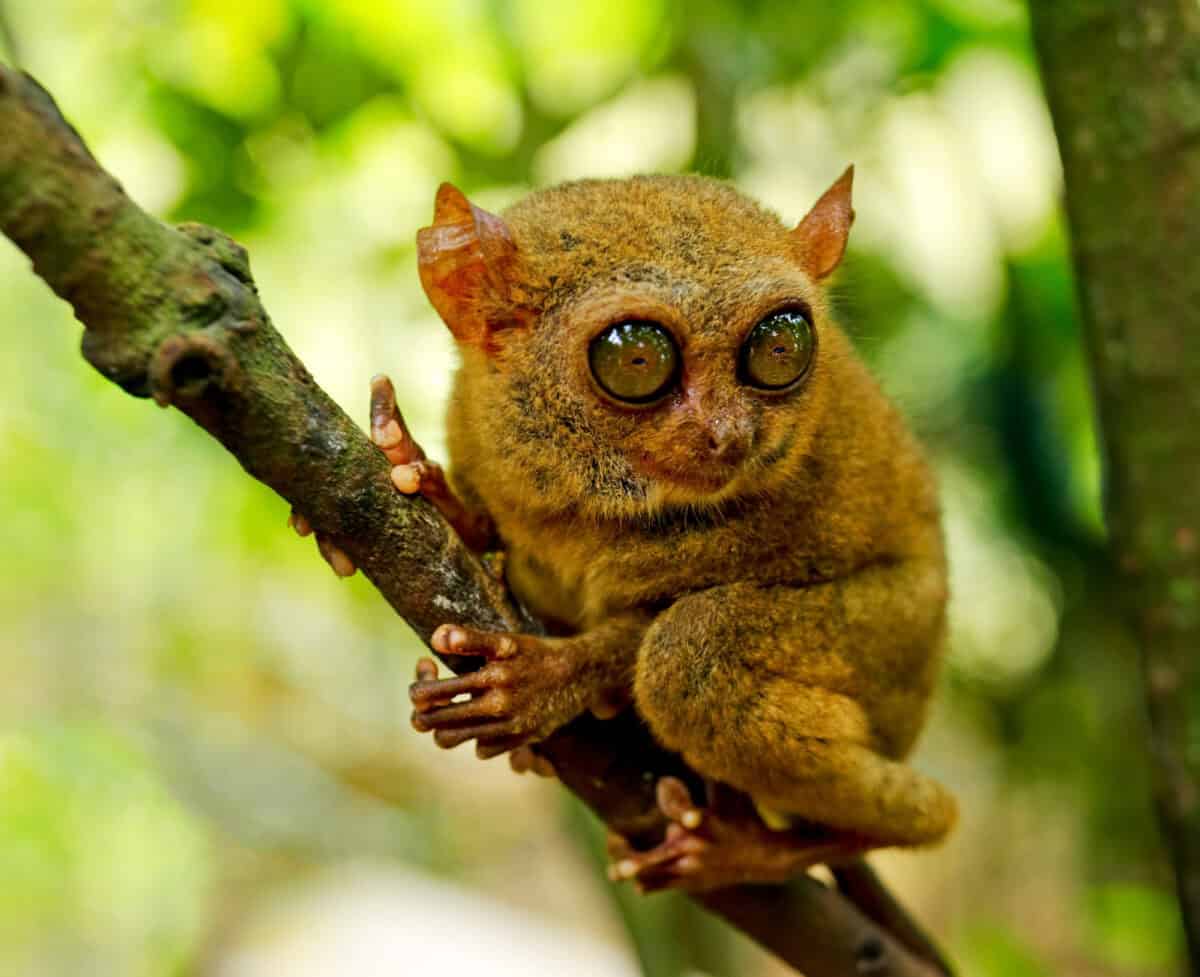
The tarsier (family Tarsiidae) presents one of the most striking primate appearances on Earth, with alien proportions that seem more suited to science fiction than evolutionary biology. Native to the islands of Southeast Asia, these small primates possess the largest eyes relative to body size of any mammal – each eyeball is approximately the same size as the animal’s brain. These enormous eyes cannot move in their sockets; instead, the tarsier can rotate its head 180 degrees owl-style to scan its surroundings. Adding to their otherworldly appearance are elongated ankle bones (tarsals, from which they get their name) that allow for powerful jumping – tarsiers can leap over 40 times their body length.
Their long, thin fingers end in suction cup-like pads reminiscent of the extraterrestrial from the film “E.T.” Despite their diminutive size (about 4-6 inches, excluding the tail), tarsiers are the only entirely carnivorous primates, feeding exclusively on insects, small vertebrates, and even birds. They can detect ultrasonic sounds beyond human hearing range, helping them locate prey in the darkness. Perhaps most unusually, female tarsiers give birth to precocial infants that are already furred, with eyes open, comprising an astounding 1/3 of the mother’s body weight – proportionally one of the largest infant-to-mother ratios in mammals. These remarkable adaptations for nocturnal hunting have remained largely unchanged for 45 million years, making tarsiers living windows into our distant primate ancestry, despite their alien appearance.
The Gharial: Ancient River Dragon

The gharial (Gavialis gangeticus) stands out as one of the most distinctive and alien-looking reptiles on Earth. Native to the Indian subcontinent, this critically endangered crocodilian possesses an extraordinarily thin, elongated snout that appears almost mechanically engineered rather than naturally evolved. This specialized rostrum, lined with 110 interdigitating teeth, functions as a precision tool for capturing fish – the gharial’s primary prey. Adult males develop a unique bulbous growth on the tip of their snout called a “ghara” (meaning “pot” in Hindi), which resembles a bizarre appendage from science fiction. This structure serves dual purposes: it amplifies vocalizations used in mating displays and produces bubbles that may help attract females.
Unlike most crocodilians, gharials cannot walk with their bodies raised off the ground; their leg muscles are not strong enough to support their weight on land, making them highly aquatic and somewhat awkward during their rare terrestrial excursions. They can grow to impressive lengths of up to 20 feet, with females being significantly smaller than males. Once abundant throughout the river systems of the northern Indian subcontinent, fewer than 250 adult breeding gharials now remain in the wild, making them one of the most endangered large animals on the planet. Their prehistoric appearance, combined with highly specialized adaptations, makes them appear like relics from another world – living fossils whose lineage dates back over 42 million years.
The Glass Frog: Transparency in the Tropics

The glass frogs (family Centrolenidae) represent one of nature’s most elegant examples of biological transparency. Native to the cloud forests of Central and South America, these small amphibians possess a truly alien feature: translucent skin that reveals their internal organs. Through the ventral surface of the frog, one can clearly observe the beating heart, liver, gastrointestinal tract, and in females, even developing eggs.
This remarkable adaptation likely serves as camouflage, allowing light to pass through their bodies when they rest on leaves, reducing shadows that might attract predators. Recent research has uncovered even more extraordinary adaptations: some glass frog species can actually shift nearly 90% of their red blood cells into their liver while sleeping, rendering their bodies even more transparent during their vulnerable resting periods. When active, the blood returns to circulation.
Conclusion

From the deepest ocean trenches to remote mountain peaks, these “alien” animals demonstrate nature’s boundless creativity and the remarkable diversity of evolutionary paths. These are the most otherworldly creatures that call Earth home – biological wonders that remind us that we needn’t look to the stars to find truly alien life forms.
- Fastest Reptile Runs on Water - August 16, 2025
- Why Some Animals Hold Funerals for Their Dead - August 16, 2025
- This Massive Crocodile Fossil Dwarfs Anything Alive Today - August 15, 2025

